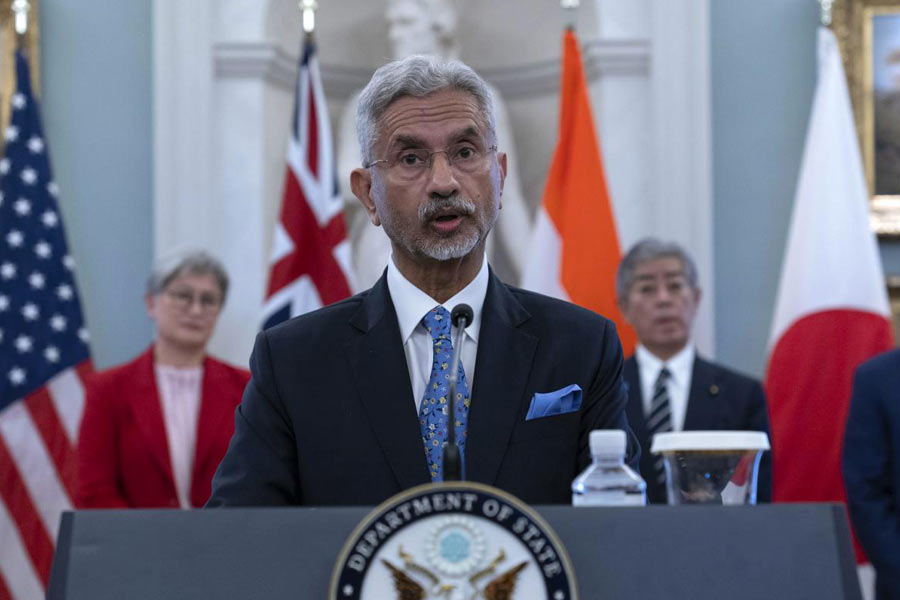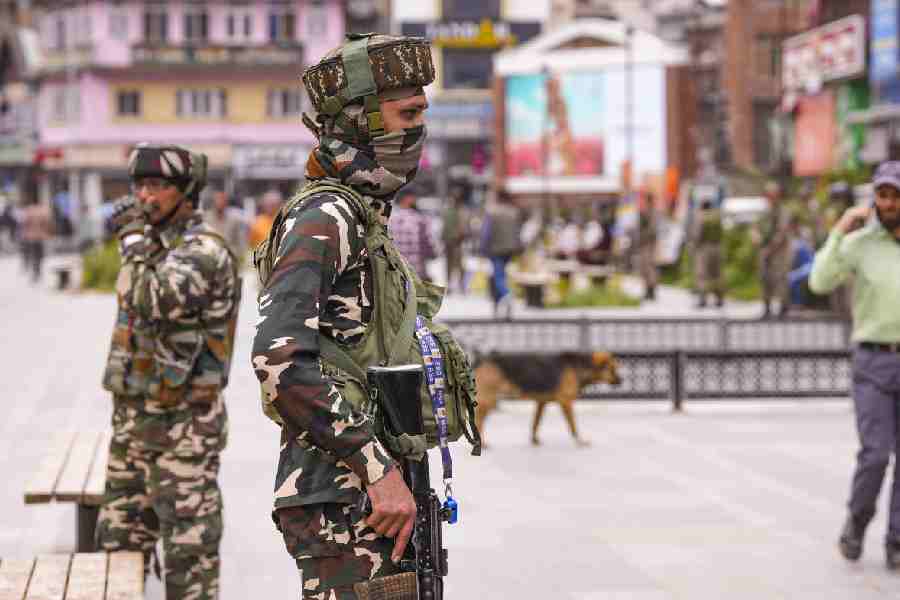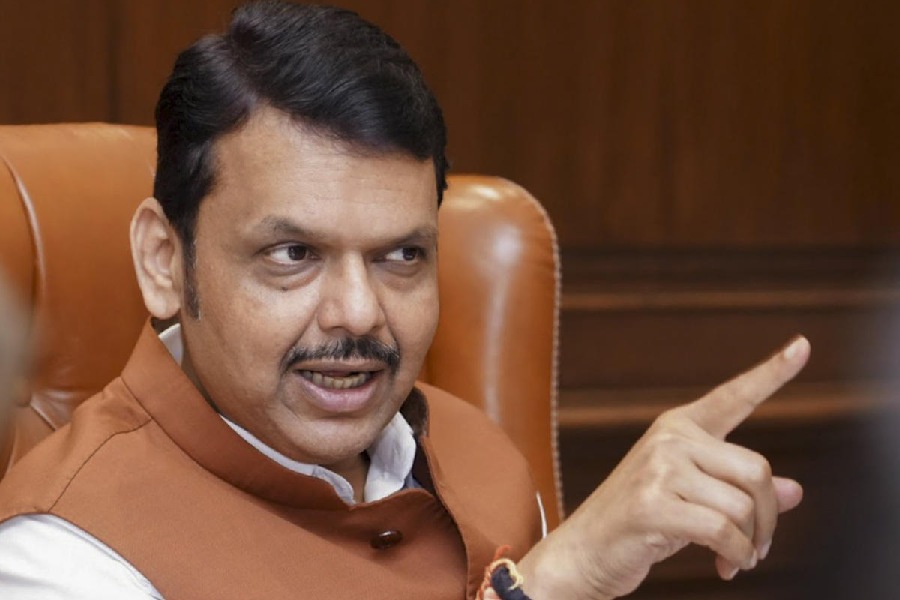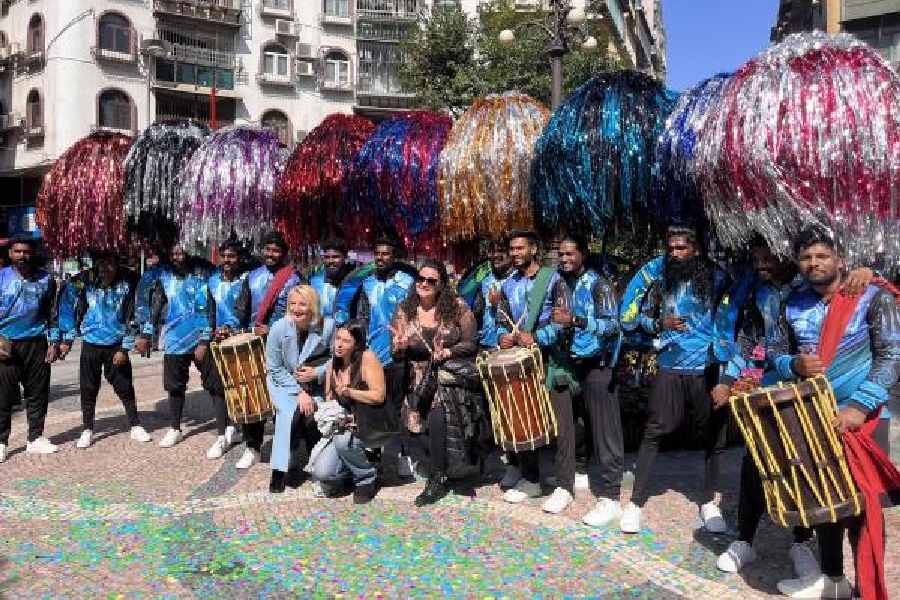 |
| Hodka has a rich crafts tradition including embroidery, bell-making and Rogaan works |
Haven’t you always wanted to discover the ‘Real’ India? And would you like to combine the voyage of discovery with a generous helping of real life adventure? How about spending an evening atop a machan guarding a village from wild elephants on the edge of Chilapata Forest in the Dooars?
Is that too adventurous for you? Perhaps, you’d like to hang about and break bread with villagers in Spiti in Himachal Pradesh. Alternatively, what about a journey of cultural exploration to Kutch, where you could stay in a traditional mud ghungha at Hodka Village and get an eyeful of the colourful crafts traditions?
Rural India — or, at least some parts of it — is throwing its doors open and putting out the welcome mat. For the intrepid traveller that means a chance to taste the true flavour of village India at places like Chilapata, or Samthar near Kalimpong or even Banavasi in Karnataka, where you can visit the 9th century Madhukeshwara temple.
 |
| Tourists can enjoy the traditional way of life in the Lepchen village, Namthang |
Village tourism is being pushed by a clutch of different players. Various central and state tourism organisations are throwing in village visits as an add-on to existing destinations. Also, NGOs and private individuals are using tourism to boost revenues and give rural folk a chance to earn a living without leaving home.
“A growing number of people are interested in village tourism today,” says Raj Basu, co-founder of Help Tourism in the North-East, who was among the first to use tourism to “connect rural areas with the mainstream to provide sustainable development.”
“People are interested in learning about different places and cultures today. There’s such a lot of diversity in India that we want tourists to get a flavour of these places,” adds Leena Nandan, joint secretary, Ministry of Tourism.
Take the tourism ministry itself, which, with the United Nations Development Programme (UNDP), launched the Endogenous Tourism Project in 36 villages ranging from Arnamula in Kerala to Lachen in Sikkim and then expanded it on its own to cover 150 villages.
 |
| Samthar is a popular destination for a walking holiday |
The ministry invested Rs 50 lakh per village to develop infrastructure, and UNDP put in Rs 20 lakh for building soft skills. Villages were chosen for their natural beauty or proximity to an existing destination or because they had a strong craft tradition. Local NGOs were brought in to implement the projects.
Then, there are the state tourism boards like Rajasthan Tourism Development Corporation (RTDC) which has just identified 13 villages like Bhoori Pahari in Sawai Madhopur for village tourism.
Meanwhile, private individuals are connecting remote villages to the mainstream tourist map. Help Tourism has developed 23 village destinations, and Basu has applications from 79 other villages.
For an example of what’s happening, look at retired General Jimmy Singh, who has been bringing tourists to Samthar village near Kalimpong. And Gouthami and Vinay Raj have founded Travel Another India, a responsible tourism advisory. They plan to develop 30 rural destinations over three years. The first is in Melghat, Maharashtra.
“We’ve always felt that the innate hospitality and beauty of India’s villages hasn’t been capitalised upon. We want mainstream tourists to enjoy them and villagers to reap the benefits too,” says Gouthami, who helped develop Hodka Village in Kutch.
 |
| Experience the jungle up, close and personal at Chilapata |
Mayura Balasubramanian, a former consultant with UNDP and who put together its book, Explore Rural India, believes rural tourism is poised to grow. “Awareness about rural India is increasing and visitors are more sensitive too. They’re not looking at it like going to a mela but as a live experience with a real living community,” she says.
Remember though that many of the village destinations are remote. So be prepared to rough it out and don’t expect the comforts of a hotel either. Even the toilet facilities in some villages may be pretty basic.
Let’s explore some of these untrodden paths:
CHILAPATA
 |
| A potter at work in Ballavpur Danga |
Would you like to combine wildlife adventure with a taste of tribal life? You can do that at Chilapata Forest in the Dooars.
Chilapata is a natural corridor between the Jaldapara Wildlife Sanctuary and Buxa Tiger Reserve. “It supports a lot of bio-diversity,” says Basu, who is the force behind developing the destination.
Chilapata is also home to various ‘tea tribes’ from Chotanagpur and other tribes from Assam. Many of them had taken to poaching but now tourism is helping to bring them into the mainstream.
The region has charmed even avid travellers like international biker Pankaj Trivedi. “Chilapata’s a beautiful place in the midst of nowhere. And it’s wonderful to see how the villagers’ lives are transforming,” he says.
You can opt for a three-day package and stay at the Chilapata and Mendabari Jungle Camps. Plus, there are homestays in the villages too.
Help Tourism typically creates participatory tours. For instance, tourists can help guard the farms — your eco-guide will light up crackers to scare off the animals should you spot them from atop your machan. Or you can trek or take a jeep safari through the forest or even take a cycle tour. Be warned though, the villages and lodges don’t have electricity.
How to get there: The nearest airport is Bagdogra and nearest railheads, New Jalpaiguri and New Alipurduar. The Chilapata tour costs Rs 700 to Rs 1,300 per person per day, including meals, stay and guide. The forest is open from September to June. Mail to kolkata@helptourism.com.
SAMTHAR
 |
| (From top) A tour of Ballavpur Danga gives tourists a taste of Santhal life; Community participation has made Hodka a roaring success; The yak safari is one of the top draws at Lahaul-Spiti |
This summer, Dulip Abraham and his family decided to head away from the heat of Hyderabad to the Northeast. Their 10-day trip included a stay at Samthar village near Kalimpong, which opened up a new way of life for them.
“Samthar was very beautiful. We soaked in the nature and got to know the different Bhutia and Lepcha communities since we stayed with them. It brought back memories of my childhood vacations to Kerala, when we reared chickens at home and went fishing in the river,” says Abraham.
Project Awake & Shine’s Samthar village tour is the creation of retired General Jimmy Singh, who heads Gurudongma Tours & Treks. Samthar is 80km from Kalimpong and overlooks the Kanchendzonga Peak. “During my lifetime experience of soldiering in the remotest parts of the Himalayas and 15 years experience in remote area tourism, I was convinced that the main issue in rural India is gainful employment. I discovered that integrated village tourism offered a viable potential,” says Singh.
Accordingly, he chose the picturesque Samthar plateau. The Lepcha, Bhutia and Nepali villagers here offer homestays, or you can stay at Singh’s Samthar Farm House. “The ordinary for the host is the exotic for the visitor,” says Singh.
Indeed that was what Rupinder Sethi from Nawashahar in Punjab discovered when she visited Samthar with her family. “We like to explore untouched areas. And our Samthar stay showed us how sweet and simple life could be,” she says.
Samthar is ideal for a walking holiday with several nature and cultural trails. As part of the village tour, you can even visit the local fortune teller or perhaps, help in the fields.
How to get there: Gurudongma Tours does pick-ups from Kalimpong. The Samthar tour costs Rs 3,120 per person per night, including jeep, guide, accommodation and all meals. September to December and February to March are ideal months. Mail to gurudongma@gmail.com.
NAMTHANG
If you’d like to combine the beauty of nature with an experience of ancient traditions, you can try Help Tourism’s new Living Buddhism tour.
It covers three Lepchen villages starting with Namthang in southern Sikkim. Traditionally, Namthang was the first stop for couples returning home after they’d run away to get married — a custom in Sikkim.
Namthang offers homestays. You can take the Buddhist trail to the Tashideng monastery nearby. Or simply soak up the atmosphere.
How to get there: Namthang is over an hour away from Rangpo, which is connected to Darjeeling, Siliguri and Kalimpong. Help Tourism’s Namthang tour costs between Rs 1,500 and Rs 2,000 per night including meals, stay and guides. Mail to siliguri@helptourism.com.
HODKA
If mountain trails don’t really catch your fancy, how about moving to the plains? Of the 36 villages developed first by the tourism ministry, Hodka near Bhuj, Kutch, is perhaps the most successful, having made its first profit last year. It’s also a striking example of participation by the local community.
Located near the Rann of Kutch, Hodka has a rich crafts tradition. Its mud architecture is especially famous. “The village communities were very poor. So we felt tourism could help them survive,” says Parth Mehta of Kutch Mahila Vikas Sanghatan, the local NGO which implemented the project.
Hodka’s conservative village community though didn’t want homestays. So it recreated a rural hamlet, the Sham-e-Sarhad resort, which offers both tented accommodation and mud huts or ghunghas. There’s regular plumbing and electricity too, and an amphitheatre for cultural performances.
Most tourists take the two-day crafts village tour which covers eight adjoining villages like Ludia and Dhodha, famous for their embroidery, and Nirona, which is known for bell-making, Rogaan or painting on fabric and lacquer wood.
Around 65 per cent of Hodka’s visitors are domestic tourists. One such was Sapna Prabhakaran and her husband, who visited last December. “Hodka was a fabulous and authentic experience. It was like an oasis in the middle of the desert,” says the avid traveller.
There are plenty of sightseeing options too. You can go to the salt desert in the Rann of Kutch nearby, or watch migratory birds at Chhari Dhand.
How to get here: The season is from October to March. Hodka is 60km from Bhuj, the nearest airport and railhead. Accommodation with meals at Sham-e-Sarhad ranges from Rs 3,200 in a ghungha to Rs 2,000 in a tent (both double occupancy). Mail to hodka.in@gmail.com.
BALLAVPUR DANGA
You needn’t stay in a village to experience its life. You can do day trips too. If you’re in Puri, you can visit Raghurajpur, a heritage village, which is rich in crafts. Or closer home, there’s the Santhal village, Ballavpur Danga, 3km from Santiniketan.
Ballavpur Danga was also developed by the tourism ministry with the help of a local NGO, Women’s Interlink Foundation (WIF).
“When we first took it up, we thought the village must be fairly developed since it’s close to Santiniketan. But it was really poor with no skills,” says Aloka Mitra, chairperson, WIF.
Today, the village, which has 119 Santhal families, has been completely transformed. It’s a scenic spot with a canal running through it and the Sonajhuri forest next door. There’s a bird sanctuary nearby too.
WIF worked with the local community to revive traditional crafts like terracotta wall murals, patachitra and leatherworks, and Santhal dances too, which are now showcased here.
A day tour typically begins with a traditional tribal welcome and a visit to the artist’s centre. This is followed by the village tour and lunch. In the afternoon, you can visit the bird sanctuary or the Amaderi haat. The tour ends with a Santhal dance performance.
Ballavpur Danga is launching homestays soon. Also, a tourist complex is coming up next door.
How to get there: Ballavpur Danga is 220km from Calcutta. Bolpur-Santiniketan and Prantik are the nearest railheads. October to April is the best season. The day tour costs Rs 1,000 per head. Mail to wif@vsnl.com and raghurajpur@exploreruralindia.org.
LAHAUL-SPITI
If you like to plan your holidays in advance, here’s an option for next summer. Spiti Ecosphere, an NGO working in the desert mountain valley of Spiti, Himachal Pradesh, is offering village tours here. Spiti is accessible from mid-May to mid-October. The tour covers villages along the trekking route like Lhangza and Komic, which now offer homestays.
“The villagers mainly farm green peas. Our objective was to see how we could increase their livelihood and link it to conservation,” says Ishita Kapoor, co-founder, Spiti Ecosphere.
Its Cultural Trail tour covers seven villages. It starts from Kaza, the district headquarters, which is 3,600m above sea level and where you spend a day acclimatising before travelling to Kee and Keeber villages. From there, you head to Lhangza, the first homestay. The tour entails fairly rigorous trekking each day but you can consider mountain biking or a yak safari too. Tourists get to experience at first-hand the Buddhist culture here.
How to get there: Travel by road from Manali to Kaza. The average tour cost ex-Kaza is Rs 1,500 to Rs 2,000 per person per day. Mail to info@spitiecosphere.com










